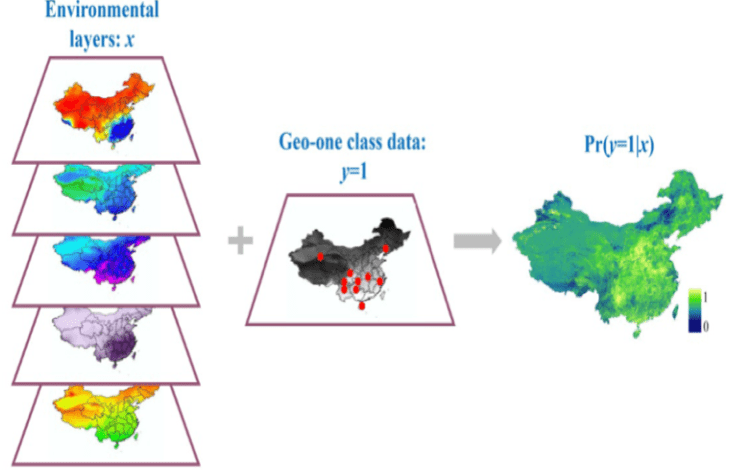

We are interested in the theory and applications of geographic one-class data. One common problem with geographic data is that, for a specific geographic event, only occurrence information is available; information about the absence of the event is not available. We define these specific types of geospatial data as geographic one-class data (GOCD) (Guo, et al, 2011). Predicting the potential spatial distributions that a particular geographic event may occur from GOCD is difficult because traditional binary classification methods require the availability of both positive and negative training samples. Our research focuses on developing new GOCD methods and their applications to human and environmental systems (e.g., species distribution, remote sensing classification, search and rescue in National Parks, and landslides).
One specific GOCD method is environmental niche modeling, which aims to map the potential distribution of species given presence-only observation data. With the increasing availability of ecological data, environmental niche modeling has gained much attention for a wide variety of ecological applications. However, one major obstacle to fully exploring the wealth of the data is that they often contain presence data and no absence data, which makes traditional statistical learning methods unsuitable for modeling them. We proposed the use of a one-class support vector machine to model presence-only species data (Guo et al., 2005). We developed a novel niche modeling approach: a positive unlabeled algorithm (Li et al. 2011). In addition, we have developed a comprehensive platform that integrates a range of state-of-the-art niche modeling methods within a geographical information system (Guo & Liu, 2010). The platform (http://gis.ucmerced.edu/ModEco/) has been downloaded and used in research projects by more than 500 universities, institutes, and organizations in North America, South America, Europe, and Asia.